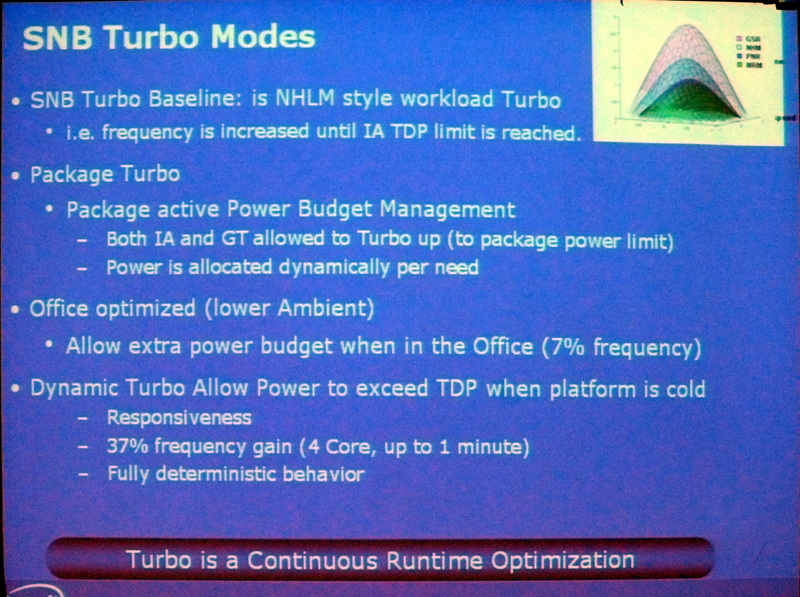or perhaps Kabini's turbo isn't very aggressive.
Anand said no turbo modes are used for A4-5000.
or perhaps Kabini's turbo isn't very aggressive.
Anand said no turbo modes are used for A4-5000.
I wonder what's going on, here. Ivy is rated at 17W, Kabini at 15W, so that's a 2W difference. Kabini also includes the southbridge, so let's say 4W.
Anand said no turbo modes are used for A4-5000.
Uhh, that's the full system power they are measuring right? i.e. not the chip power (17W).This is clearly blowing well past 17W during intense graphics load and it's not being reported in most of the tech press. I really hope Anand has the balls to show us how efficient Haswell's iGPU is while he's telling us how fast it is.
Uhh, that's the full system power they are measuring right? i.e. not the chip power (17W).
It's only allowed to exceed the chip TDP for very short periods of time - it can't sustain an average TDP higher than the design point.It's more like 25W at least - there is simply no way the rest of the system without screen is drawing another 17W on top of the supposed maximum TDP of the chip.
It's not correct. Like I said, download some monitoring tools and look for yourself. Not sure why you're on a crusade here in any case... process tech shines more the more TDP limited stuff is, and quite frankly, HD4000 is simply not designed to be wide enough to scale up to higher TDPs. Haswell GT3 will increase that of course, so stay tuned.edit - that's my theory, might be bullshit.
By short I'm talking like ms level; at most seconds, but I don't recall the details. Definitely not long enough to skew benchmark runs. It also will typically happen - if at all - in the "warm up" phase of benchmarks where the results get thrown out anyways, as that's what heats up the chip quickly. Once it hits a steady state it obviously can't do that.How short are benchmarks though?


Well, mostly by starting to actually care beyond just being "good enough"There's no doubt Intel has caught right up in performance since those days but I've always been suspicious of how exactly they got there while lowering TDP so much as well.
Agreed, but same for everyone. Power efficiency for a given fixed task is an area that is really poorly handled by reviewers at the moment. Ideally you want some sort of "joules per time-demo" style measurement between systems, normalizing other factors, but that is not always easy.In the end there is a lack of data on intel's power efficiency while gaming.
Supposedly the A8 Llano mobiles would throttle themselves if they ran on battery:Like I said though I've seen this kind of thing before with older 35W chips, where the intel systems are performing much worse in terms of graphics efficiency (the other benchmarks like web browsing etc are generally tied as you would expect from 35W parts).
Supposedly the A8 Llano mobiles would throttle themselves if they ran on battery:
http://www.legitreviews.com/article/1636/5/
It's not so much as Intel running past their TDP as possibly AMD preventing their CPUs from reaching their TDP limits on battery.
Anand released some gaming power numbers for the 2020M - http://www.anandtech.com/show/6981/...ality-of-mainstream-pcs-with-its-latest-apu/3
That's near HD 2500 level performance I believe, and I would suggest very lightly threaded games as well judging by how close the E-350 is to both. Power draw is double the A4-5000's.
It's a 35w chip, what else should we expect? The fact that we're talking about power use for the entire system makes it a little more impressive, but results for the chips alone should show Kabini using less than half the power of a Pentium 2020M. This shows generally just over half. The results just prove the stated TDP's are quite accurate.





